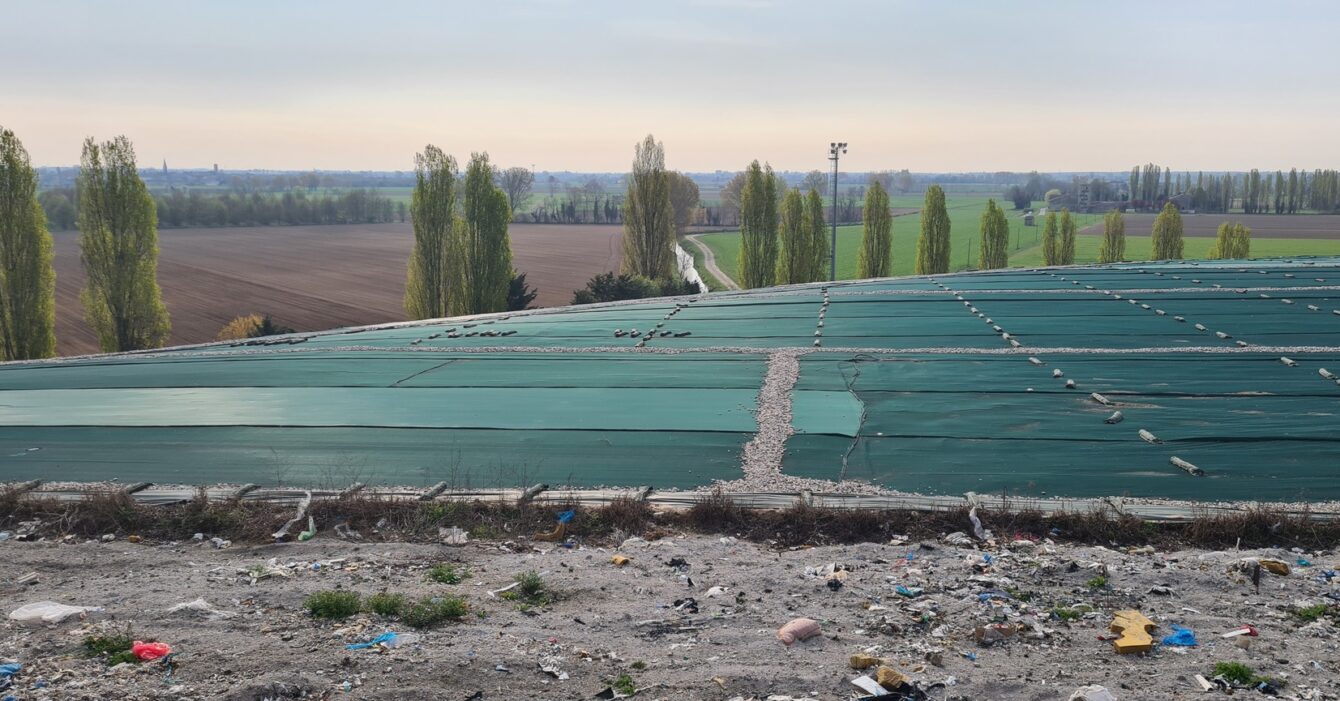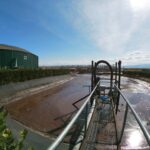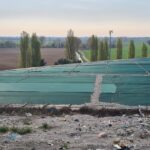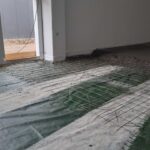Waste management is an issue of great importance for the protection of the environment and public health. Among the various solutions available, RNP (Non-Hazardous Waste) landfills are one of the most common methods of municipal solid waste disposal. However, their management requires a number of precautions to ensure the safety and sustainability of the entire process. In this article, we present a successful case using Cover Up reinforced geomembrane for the permanent securing of a RNP landfill.
The first step in the creation of an RNP landfill is the creation of a landfill cell, where waste can be collected and properly separated. Once the expected fill level is reached, the cell is closed and the permanent securing phase is initiated, which consists of protecting the landfill from erosion and infiltration of water and gas. This phase requires the creation of a final cover comprising several layers: a mineral layer, a compacted clay layer, a drainage layer and a vegetation layer.
However, the infiltration of rainwater can still cause the production of leachate, a highly polluting liquid that can damage the surrounding environment. To prevent this problem, the integration of a reinforced geomembrane in the final cover is recommended.
The permanent securing of the RNP landfill site
The securing of the landfill involved a series of interventions including biogas capture, clay compaction, installation of the reinforced geomembrane, and rainwater drainage.
Thanks to the choice of Cover Up's reinforced geomembrane, it was possible to minimise onsite welding, which was carried out in the factory before reaching its intended use. In addition, the product's light weight allowed it to be installed quickly, reducing installation time and overall project costs.
The geomembranes of the Cover Up series are an example of how technology can help solve environmental problems while ensuring the economic sustainability of the entire process. Thanks to their high mechanical strength, flexibility and adaptability, they have become a very effective solution for the permanent securing of RNP landfills.
The technical details of the cover
For the final landfill cover, according to the various functions required, the following were required:
- a compacted mineral layer of defined thickness and hydraulic conductivity;
- a compacted clay barrier;
- a drainage system for biogas and water
- a final green restoration.
With a view to minimising water infiltration, an addition to the planned sealing package was suggested, inserting a reinforced geomembrane from the Cover Up series, which proved to be an effective and reliable barrier to percolating water (20,000,000 square metres already installed).
Once the active placement was completed, the permanent securing was carried out by remodelling the landfill body, capturing the biogas, compacting the clay, installing the reinforced geomembrane and draining rainwater.
Finally, the environmental recovery of the site was started by restoring the surface layer of the ground cover, completing the adequate protection of the underlying barriers and facilitating grassing against erosion while respecting a sustainable environmental impact.
Specifically, the Cover Up reinforced geomembrane was chosen because it allows the clay soil to be protected, ensuring a double waterproofing barrier over time with the following essential characteristics
- geomembrane with high tensile strength, to withstand the load of the topsoil and the underlying phenomena of compaction and settlement of the waste
- particularly flexible and adaptable geomembrane, therefore able to support the drainage layer and topsoil without triggering dangerous slipping phenomena
- minimising welding at the construction site, as these are carried out in the factory before reaching their destination of use
- considerable savings for the contractor, who can quickly install the reinforced geomembrane and deliver the required barrier system.
Cover Up geomembranes are functional and cost-effective, designed with high mechanical strength values, and are produced with a high-density polyethylene (HDPE) inner fabric that forms the product's reinforcement. Hot-rolling with a triple layer of low-density polyethylene (LDPE) ensures a waterproof barrier.
The intervention described is thus completed with low investment costs, both in terms of the purchase of the geomembrane Cover Up and its installation in a short time.





